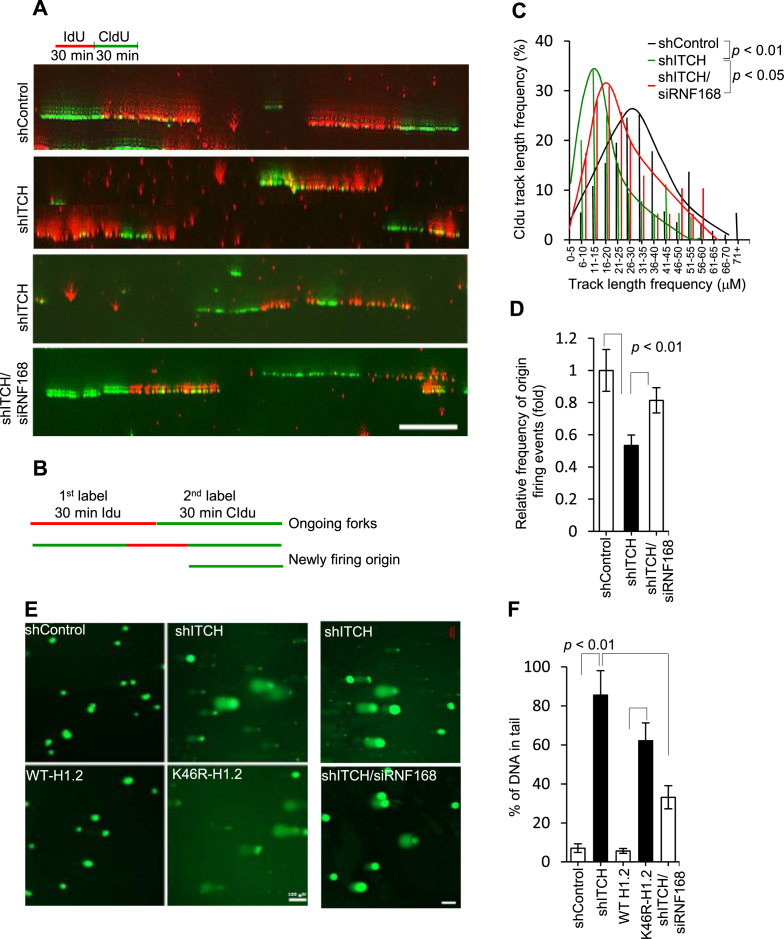Figure 7.
ITCH makes cells resistant to replication stress and DNA damage. (A) MDA-MB-231 cells transfected with single or combined scrambled shRNA (shControl), ITCH (shITCH), or RNF168 (siRNF168) were labeled consecutively with IdU (red) and CldU (green), for 30 min each, before isolating and stretching DNA for IF, as illustrated in the schematic. Representative images of dual-labeled fibers are shown. (B) Schematics showing ongoing tracks sequentially labeled with IdU (red) and CIdu (green). Origin firing events are labeled in green only (initiated during the IdU period) or green-red-green (initiated during the IdU period and ongoing in the CIdU period). Tracks with stalled/collapsed forks during the IdU period are labeled in red only. The mean CldU tract length distributions of ongoing tracts (C) and the fold change of new origin firing events defined by these two track types among all labeled tracks (D) are shown for three independent experiments in which 200–450 tracks/experiments were analyzed for shControl, shITCH, or combined shITCH and siRNF168 cells. shControl was given an arbitrary value of 1.0. (E) Representative IF images (N = 3) of cell nuclei assessed for single-stranded and double-stranded breaks using the comet assay at alkaline pH from the agarose-embedded nuclei of MDA-MB-231 cells after transnfection with shControl, shITCH, or shH1.2 re-expressing WT- or K46R-H1.2 as well as combined shITCH and siRNF168. Cells were stained with SYBR-green after separation of DNA fragments by electrophoresis. Scale bar, 100 μm. (F) Quantification of tail moment detected using comet assays from a total of 90–100 cells in triplicate were analyzed per group. Data are represented as mean ± S.D.

